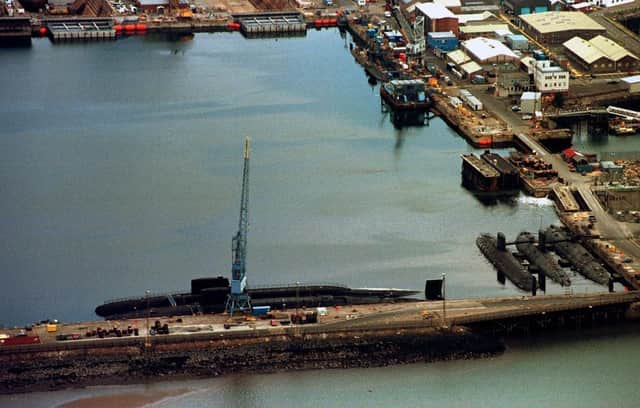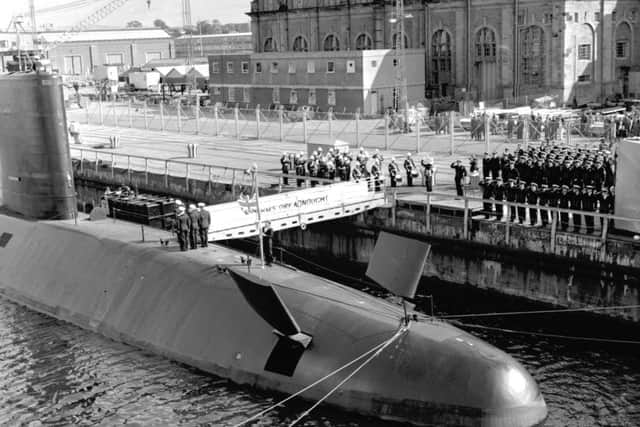When will Rosyth's nuclear submarines finally be scrapped?


The vessel was the UK’s first ever nuclear-powered submarine and represented a great leap forward in the country’s defence capabilities at the height of the Cold War.
But the Dreadnought today is a source of embarrassment rather than pride for the Senior Service. The submarine was decommissioned in 1980 and has been laid up afloat at Rosyth Dockyard ever since. It has now spent double the time tied up in Fife than it did on active service.
Advertisement
Hide AdAdvertisement
Hide AdAnother six decommissioned nuclear submarines have since joined Dreadnought at the former naval base. The cost of storing and maintaining them was £1.6 million in 2013/14, down from £3.8m the year before.


A total of £16m was spent in a five-year period on 19 laid-up submarines at Roysth and Devonport on the south-coast of England.
Although all the vessels in Fife have been defuelled, they cannot be scrapped until their radioactive parts have been removed - a process that will take decades.
The Ministry of Defence (MOD) announced in December it had finally began this gradual process, beginning with HMS Swiftsure, which has been laid up at Rosyth since 1992.
“We have begun initial dismantling on time and as planned in Rosyth, and are committed to ensuring that submarine dismantling is undertaken in a safe, secure, cost-effective and environmentally sound manner,” an MOD spokeswoman told The Scotsman.


They added the decommissioned submarines were subject to regular maintenance and checks by both the MOD and regulators, and “pose no additional risks to workers or members of the public”.
The first step in the dismantling process is to take “low level waste” out of the Swiftsure.
“The process will be refined with this first vessel and then best practice taken forward for the remaining vessels,” the spokeswoman added.
Advertisement
Hide AdAdvertisement
Hide Ad“It will take a number of decades to complete all of the submarines in the scope of Submarine Dismantling Project. It is not possible to give a precise timescale until feedback is received from the demonstrator submarine. This will inform the current assumption of dismantling one submarine every 18 months.”
But those who have long campaigned for the submarines’ removal, citing safety fears, are worried about potential delays arising from the experimental nature of the decommissioning project and a lack of budget.
Douglas Chapman, MP for Dunfermline and West Fife and a former Roysth councillor, has been calling for the MOD to take action since first being elected.
“The submarine dismantling programme has been waiting to happen for years,” he said.
“Thank goodness some progress appears to be underway however, even if the process proves successful, the pace at which submarines being dismantled amount to just one per year.
“The MOD confirmed to me in the Defence Committee that the pace of dismantling could not be accelerated due to lack of sufficient budget.
“The key issue for Scotland and Rosyth is that all hazardous waste is safely removed from our shores and no further old submarines are brought to Rosyth for storage. Our deal is once the ones we have are gone, they’re gone and we’re not interested in accepting anymore.”
